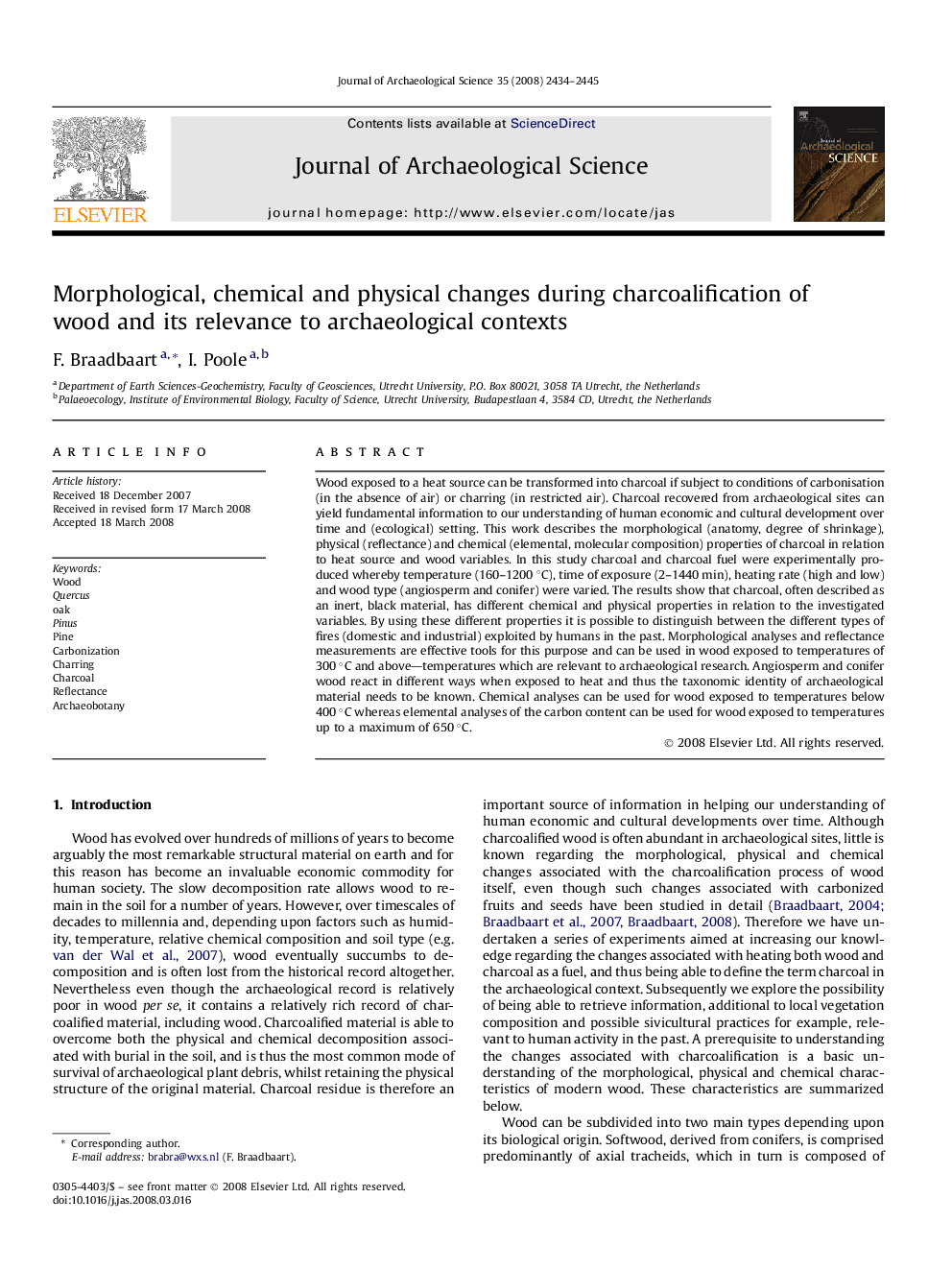| کد مقاله | کد نشریه | سال انتشار | مقاله انگلیسی | نسخه تمام متن |
|---|---|---|---|---|
| 1037375 | 943924 | 2008 | 12 صفحه PDF | دانلود رایگان |

Wood exposed to a heat source can be transformed into charcoal if subject to conditions of carbonisation (in the absence of air) or charring (in restricted air). Charcoal recovered from archaeological sites can yield fundamental information to our understanding of human economic and cultural development over time and (ecological) setting. This work describes the morphological (anatomy, degree of shrinkage), physical (reflectance) and chemical (elemental, molecular composition) properties of charcoal in relation to heat source and wood variables. In this study charcoal and charcoal fuel were experimentally produced whereby temperature (160–1200 °C), time of exposure (2–1440 min), heating rate (high and low) and wood type (angiosperm and conifer) were varied. The results show that charcoal, often described as an inert, black material, has different chemical and physical properties in relation to the investigated variables. By using these different properties it is possible to distinguish between the different types of fires (domestic and industrial) exploited by humans in the past. Morphological analyses and reflectance measurements are effective tools for this purpose and can be used in wood exposed to temperatures of 300 °C and above—temperatures which are relevant to archaeological research. Angiosperm and conifer wood react in different ways when exposed to heat and thus the taxonomic identity of archaeological material needs to be known. Chemical analyses can be used for wood exposed to temperatures below 400 °C whereas elemental analyses of the carbon content can be used for wood exposed to temperatures up to a maximum of 650 °C.
Journal: Journal of Archaeological Science - Volume 35, Issue 9, September 2008, Pages 2434–2445